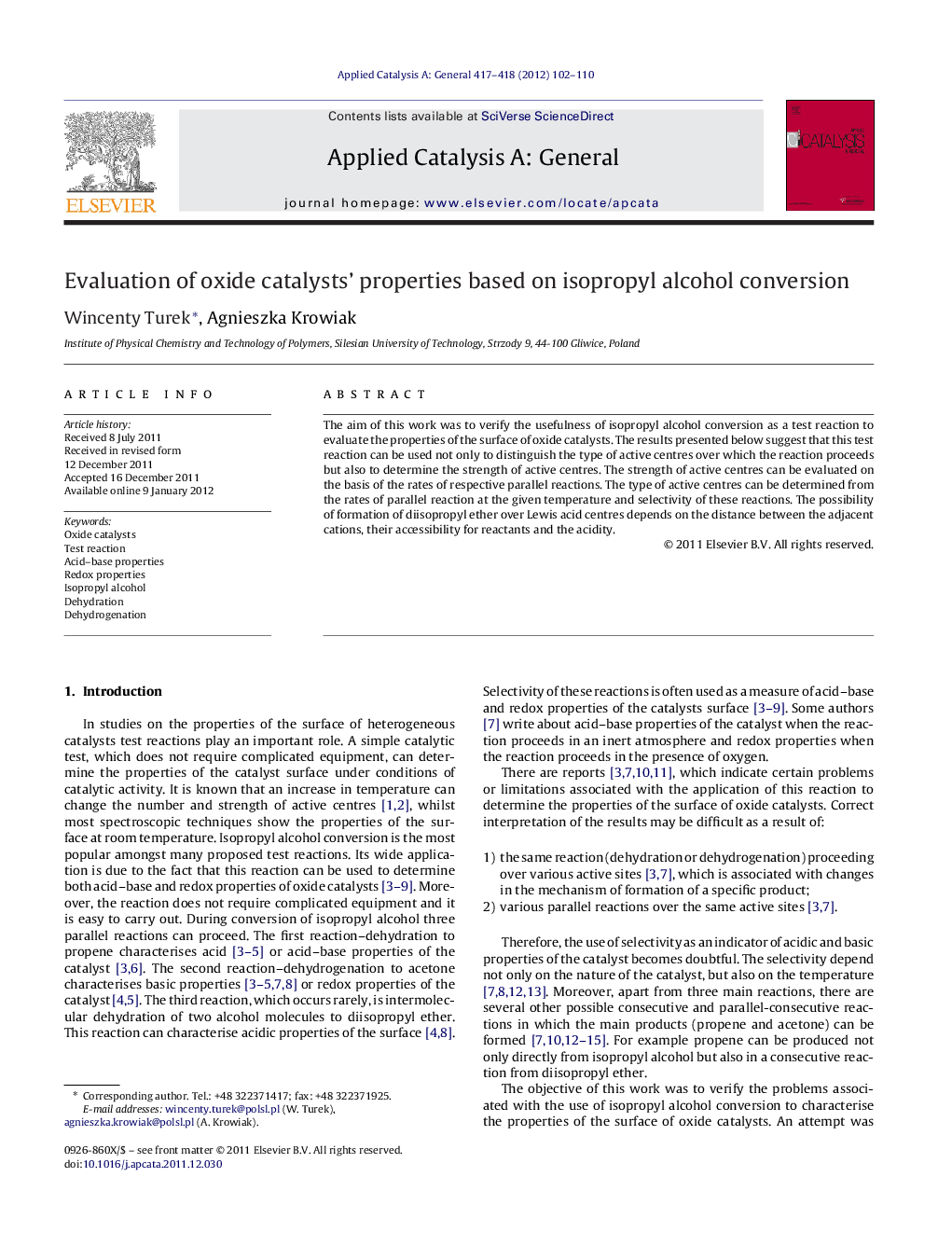| Article ID | Journal | Published Year | Pages | File Type |
|---|---|---|---|---|
| 41166 | Applied Catalysis A: General | 2012 | 9 Pages |
The aim of this work was to verify the usefulness of isopropyl alcohol conversion as a test reaction to evaluate the properties of the surface of oxide catalysts. The results presented below suggest that this test reaction can be used not only to distinguish the type of active centres over which the reaction proceeds but also to determine the strength of active centres. The strength of active centres can be evaluated on the basis of the rates of respective parallel reactions. The type of active centres can be determined from the rates of parallel reaction at the given temperature and selectivity of these reactions. The possibility of formation of diisopropyl ether over Lewis acid centres depends on the distance between the adjacent cations, their accessibility for reactants and the acidity.
Graphical abstractFigure optionsDownload full-size imageDownload high-quality image (90 K)Download as PowerPoint slideHighlights► Isopropyl alcohol conversion as a test reaction for surface properties of oxide catalysts. ► Simple and mixed oxides having diverse acid–base and redox properties. ► Dependence between acid–base centre strength and rates of parallel reactions. ► Test of strength and type of active centres. ► Conditions of diisopropyl ether formation over oxide catalysts.
